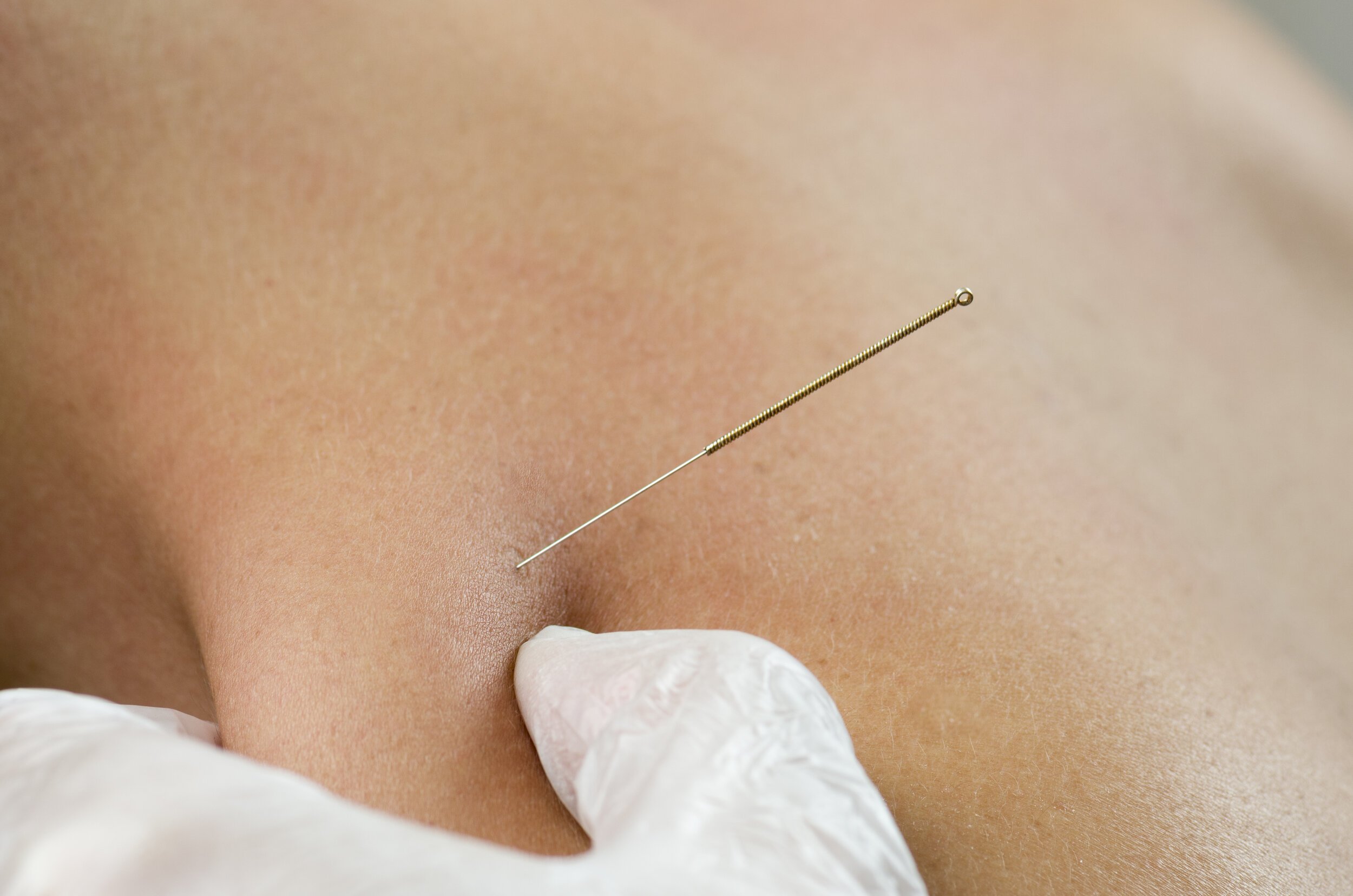
Dry Needling: Intramuscular Stimulation (IMS) or Acupuncture
Intramuscular Stimulation (IMS) & Acupuncture
Dry needling is an umbrella term which refers to needling techniques such intramuscular stimulation (IMS) or acupuncture. IMS and/or acupuncture treatment techniques are used by certified physiotherapists.
Certification and Techniques: The physiotherapists at our clinics have been certified to perform IMS and/or acupuncture. There are several ‘types’ of dry needling certifications such Chan Gunn IMS, Functional IMS, Anatomical IMS or regional certifications such as Orofacial IMS. Chan Gunn is a prominent figure in the field of IMS, and his certification suggests a high level of expertise in the technique. It is now administered through the University of British Columbia (UBC). Acupuncture in Canada is typically certified through Acupuncture Canada (https://acupuncturecanada.org ; previously the CAFCI designation).
Needling Technique: IMS involves the insertion of sterile acupuncture-like needles into affected muscles. Unlike acupuncture, which is rooted in traditional Chinese medicine and targets specific energy meridians, IMS focuses on stimulating a response in the nervous system and inducing reflexive relaxation of the muscle. Acupuncture needles are typically just inserted into the skin but in some instances can be inserted into a muscle.
Nervous System Stimulation: The primary mechanism of IMS is to stimulate the nervous system. The introduction of needles into specific muscles triggers a response that may help alleviate muscle tension, reduce pain, and improve range of motion. It’s a similar response to when you hit a reflex hammer on your knee tendon and your leg suddenly jerks!
Muscle Relaxation: The reflexive relaxation of the targeted muscles is a key outcome of IMS. This can be particularly beneficial for individuals experiencing chronic muscle tightness.
Individualized Approach: The selection of muscles for dry needling is based on an individual's presentation and the results of a thorough orthopaedic and neuropathic assessment. This underscores the personalized and diagnostic nature of IMS and acupuncture, tailoring the treatment to the specific needs of each patient.
Orthopaedic & Neuropathic Assessment: IMS practitioners conduct a comprehensive assessment that encompasses both orthopaedic (related to the musculoskeletal system) and neuropathic (related to the nervous system) aspects. This holistic evaluation helps identify the root causes of the patient's symptoms.
Treatment for Various Conditions: IMS is often used as a treatment for a variety of musculoskeletal conditions, including but not limited to, muscle tightness, chronic pain, and dysfunction related to nerve irritation. Acupuncture is typically only used as a pain relief modality.
Pain Management: IMS can be an effective component of pain management strategies, especially for conditions where muscle tension and nervous system involvement play a role. Both IMS and Acupuncture cause the body to release endorphins, your body’s natural pain relieving hormones.
It's important for individuals considering IMS or acupuncture to consult with their healthcare provider, such as a physiotherapist, to determine if it is appropriate for their specific condition.

